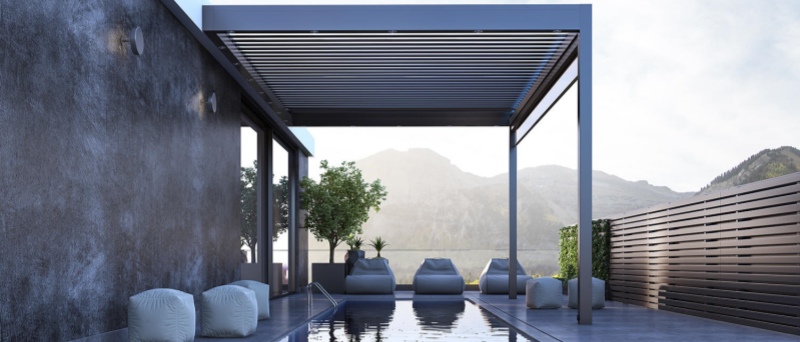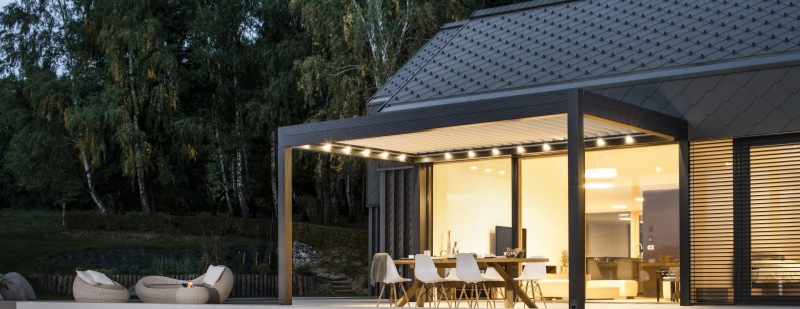
Designing Your Dream Custom Pergola: What You Need to Know
2024-07-18
A custom pergola can transform your backyard into a beautiful, functional outdoor living area. Whether you're looking to add shade, create a focal point, or enhance your garden's appeal, a custom pergola offers an excellent way to elevate your outdoor space. This guide will walk you through the steps to design a perfect custom pergola, including material choices, location considerations, and design elements.

Why Choose a Custom Pergola?
Tailored to Your Needs
When it comes to outdoor structures, one size does not fit all. A custom pergola allows you to create a unique design that fits your exact specifications. You can choose the dimensions, materials, and even the style, ensuring the pergola blends seamlessly with your outdoor decor. Whether you have a small backyard or a large garden, a custom pergola can be built to suit the size and shape of your space.
Increased Value and Appeal
A well-designed pergola can increase your home’s curb appeal and overall value. It provides both functional and aesthetic benefits, such as an inviting area for relaxation, a space for entertaining guests, or an architectural feature that complements your home’s design. Buyers are often drawn to homes with beautiful outdoor spaces, and a custom pergola can make your property stand out.
Choosing the Right Location for Your Pergola
Outdoor Space Considerations
Choosing the right location for your pergola is crucial for its functionality and aesthetics. Start by assessing the flow of your outdoor space. Consider the position of your home, trees, and other structures that may provide natural shade or obstruct sunlight. Ideally, you want your pergola to offer ample shade during the hottest parts of the day while still allowing for pleasant light during the evening.
Another key factor to consider is wind direction. Installing a pergola in an area that’s too exposed to strong winds could cause damage over time. Be sure to select a location where the pergola won’t be prone to harsh weather conditions but still provides the privacy and comfort you desire.
Matching with Landscape
It’s important to ensure that your pergola complements the overall design of your yard and house. If your home is contemporary, you may want a sleek, modern design, whereas a traditional home might look better with a classic wood pergola. Be sure to consider the surrounding landscape, too—whether your yard features a garden, pool, or other outdoor elements, your pergola should enhance these features without overpowering them.

Material Selection: Aluminum, Wood, and Other Options
Durability and Maintenance
When designing a custom pergola, the material you choose will affect both its longevity and maintenance. Common options include:
-
Aluminum: Aluminum is a popular choice because it’s lightweight, durable, and resistant to the elements. Unlike wood, it doesn’t warp, rot, or require frequent maintenance. It’s also corrosion-resistant, making it perfect for areas with high humidity or near the coast.
-
Wood: Wooden pergolas offer a more traditional, natural look. They can be customized with a variety of finishes and stains to match your personal style. However, wood requires more upkeep, including regular sealing, staining, and potential repairs for issues like rot or insect damage.
-
Other Materials: Other materials such as steel, composite, and vinyl offer varying benefits. Steel is strong and durable but may require more maintenance. Composite materials mimic wood’s appearance without the upkeep, and vinyl offers low maintenance but lacks the natural aesthetic of wood.
Choosing Based on Climate and Usage
Your choice of material should also depend on your local climate. If you live in a region that experiences harsh weather conditions, you may prefer aluminum or steel for their resistance to corrosion. Wood might be better suited for a milder climate, where the need for frequent maintenance is lower. If you’re planning to use your pergola for outdoor dining or entertaining, make sure the material you choose is comfortable and durable enough for daily use.
Design Elements to Consider
Size and Shape
The size and shape of your pergola should be based on the function you want it to serve. For instance, if you plan to use your pergola for dining, you’ll need to ensure it’s large enough to accommodate a table and chairs. On the other hand, a small pergola in a cozy corner could provide the perfect spot for a couple of chairs or a hammock.
Consider how the height of the pergola will affect the space underneath. A taller structure creates a more open and airy feeling, while a lower pergola can provide a cozier atmosphere. Ensure that the proportions are balanced, and the pergola doesn’t overwhelm your space.
Roof Options
The roof of your pergola is one of the most important design elements. There are various roof styles to consider:
-
Louvered Roof: A louvered roof is an excellent option for those who want flexibility. You can adjust the slats to control the amount of sunlight entering the space, allowing you to have more control over shade and ventilation.
-
Solid Roof: A solid roof provides full coverage, offering protection from the sun and rain. It’s ideal for areas where you want to create a fully sheltered outdoor space.
-
Open Slats: Open slats allow for natural light to filter through, offering a balance of shade and sun. This option is perfect for those who want a more open feel and are looking to add a little more character to the structure.
Additional Features
Add-ons can enhance the functionality and aesthetics of your pergola. Consider including built-in seating, decorative drapes, or hanging plants to create a more intimate and inviting environment. You can also integrate lighting, such as string lights or recessed LEDs, to create an ambiance for evening gatherings.
Budgeting and Cost Considerations
Factors Affecting Cost
The cost of your custom pergola will depend on several factors, including the materials, size, design, and additional features. Aluminum and steel tend to be more affordable and require less maintenance, while custom wood pergolas may cost more due to their intricate design and the need for additional upkeep.
Planning a Budget
It’s important to set a realistic budget when designing your pergola. Include costs for materials, labor (if you’re hiring a professional), installation, and any extra features you want to add. You can save money by opting for a simpler design or choosing materials that are more cost-effective, but be sure to prioritize durability and functionality to ensure your investment lasts.

Installation Process: What to Expect
Planning and Permits
Before installation, check whether you need a permit for your pergola. Depending on your location and the size of the structure, local building codes may require you to submit plans or request approval. A professional contractor will help you navigate this process to ensure everything is in compliance with regulations.
DIY vs. Professional Installation
Decide whether you want to tackle the installation yourself or hire a professional. DIY installation can be a rewarding experience if you’re handy, but it can also be time-consuming and challenging. Professional installers bring experience and efficiency, ensuring your pergola is built correctly and on time. Weigh the costs of professional installation against the time and effort you’d spend doing it yourself.
Timeline for Completion
The installation of a custom pergola can take anywhere from a few days to a couple of weeks, depending on the complexity of the design and the materials used. For a straightforward aluminum pergola, the timeline will likely be shorter than for a more intricate wooden design. Make sure to discuss the expected timeline with your contractor before starting.
Maintenance Tips for Longevity
Keeping It in Good Condition
Once your pergola is installed, it’s important to keep it well-maintained to extend its lifespan. Aluminum pergolas are relatively low-maintenance, requiring occasional cleaning with soap and water to keep them looking new. Wooden pergolas require more attention, including regular sealing and staining to prevent decay and fading.
Repair and Restoration
Over time, your pergola may require minor repairs. Wooden structures may need to be re-stained or treated for pests, while aluminum structures might need some touch-up work if scratched. Keep an eye on the condition of your pergola, especially after harsh weather conditions, to prevent any issues from becoming serious problems.
Conclusion
Designing a custom pergola for your outdoor space is an exciting project that can greatly enhance your home's curb appeal and functionality. From choosing the right materials and design to planning for installation and maintenance, each step contributes to creating the perfect outdoor retreat. With careful planning and attention to detail, your custom pergola can become a beautiful and lasting addition to your home.
